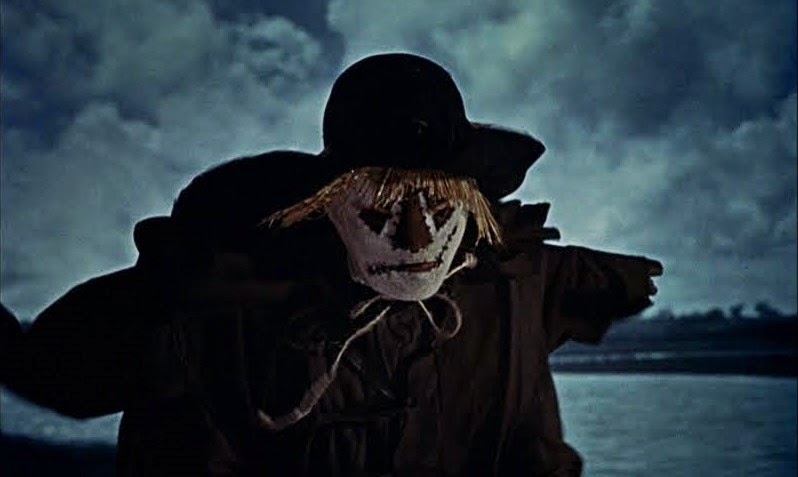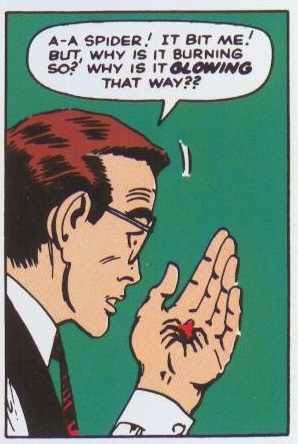A long-overdue pop culture reference for the title, just to get us moving.
It’s always interesting to me when I try to figure out what next week’s blog will be about, for that little teaser at the end of this week’s blog. This week’s started off when I was passing quick notes back and forth with a friend who’s doing the NaNoWriMo challenge this year. He had a clever idea for one of his upcoming chapters, about midway though his work-in-progress, and I… well, I was advising against it. Then someone brought up the same issue on a publisher’s message board I frequent. A few days later, I was reading scripts for a contest and found one where said issue had become one of the problems crippling the screenplay.
What is said problem, you ask?
Well, the first time I ever saw Doctor Who was halfway through a very trippy story arc called “The Deadly Assassin” (which has finally become available on DVD). It was probably the worst set of episodes to try to start watching the show on, because the Doctor spent a good chunk of it in the mind-twisting reality of the Matrix (yes, Doctor Who had a Matrix decades before Keanu Reeves did). A few months later I tried again and WGBH (which only had so many episodes) had circled back around to “Robot,” which was the first Tom Baker story, also featuring the lovely Elizabeth Sladen as Sarah Jane. And that’s how I became a Doctor Who fan, and have remained one for most of my life.
What the heck does that have to do with any of this?
Well, it’s hard to tell, isn’t it? Suddenly bam I’ve gone from the usual rant to some senile doddering about my childhood without any sort of transition.
Ahhhh-haaaahhhhhh…
Transitions are what I wanted to rant about this week. That moment your story goes from this to something else. It can be a shift in character, person, location, or time. Every time you switch, you’re asking your audience to take a moment to readjust. The bigger the shift, the bigger the time of adjustment. Most of us could make it past either a six inch step or a three foot drop, but one’s going to take a lot more effort than the other.
As a writer, you don’t want the audience to think about that adjustment. If everything’s done right, the transitions will be as invisible as the word “said.” If there are too many transitions, though, going in too many different directions, it’s too much like driving on a road covered with speed bumps. You’re asking the reader to pause again and again and again and again. If a manuscript has too many transitions, or too many extreme ones, it’s going to go into that large pile on the left. What would you do if a manuscript made you pause half a dozen times in the first ten pages? Would you keep reading or get back to folding laundry?
I mentioned my friend who started all this off (and who most likely is reading this). Let me be blunt and hope he forgives me. In the middle of his superhero action-intrigue story, he wanted to do an entire chapter in verse. Chaucer-style, Canterbury Tales verse. Why isn’t important for our purposes, just that he was going to do it. He had a very solid reason for it, and I have no doubt he could’ve pulled it off.
The thing was, he’d actually had several point of view shifts in his novel already. Some of them were basic shifts– we’d go from third person focused on him to third person on him. Then there would be jumps to first person narratives. And epistolary chapters. And flashbacks. Plus a frame that was a flash-forward. So it wasn’t just that he wanted to do a chapter in verse, it’s that he wanted to do a chapter in verse on top of everything else. All fine and good on their own, but as they begin to pile up…
As a brief but relevant segue, let me talk about Dean Koontz for a moment, author of (among many, many others) Watchers, Dark Rivers of the Heart, and the Fear Nothing series (which I really hope he goes back to some day). Early in his career, Koontz wrote a great little book called How To Write Best Selling Fiction It’s gone out of print, and the author himself has said he’s got no interest in seeing it re-issued. I think a lot of the reasons for both are political, because in this book young Koontz did say a lot of blunt, rather unkind things about publishing, gurus, and wannabe writers. Now, in all fairness, many of these things were completely true, and still are today. They’re not what people want to hear or admit, but, as a friend of mine once told our boss, if you wanted a cheerleader you should’ve hired one. If you can find a copy– grab it (they go for big bucks on eBay). If you can find it online, download it, memorize it, and delete it. Than write an angry letter to Writers Digest Books telling them how they’ve forced you to resort to piracy.
Back on track, though.
One thing Koontz stresses, and you can see it in his work, is to never shift viewpoints within a chapter. Use the chapter break itself as the big pause and try to have as few little ones within it as possible. Now, I’d never go as far to say you should never switch within a chapter, but I also think Koontz has a solid track record backing him up.
So, a few quick tips for transitions…
Fewer – This is the easiest one. The simplest way to avoid troubling shifts is… well, avoid them. Look at the transitions in your writing and figure out how many of them can be trimmed out or consolidated. Is it harder to tell a story with fewer transitions? A bit, yes, but far from impossible. Alfred Hitchcock’s Rope doesn’t have one transition in it. It’s a single continuous film narrative from start to finish. Defoe’s Robinson Crusoe only has two in the entire novel. It switches to an epistolary journal for a few dozen pages and then back to the regular narrative. There aren’t even chapter breaks.
Smaller – As I mentioned above, it’s easier to go down a six inch step than a three foot drop. It’s easy for a reader to go from third person, past- tense to another third person, past tense. It’s a bit harder to start in third person, past tense and jump to second person, future tense section and then back… or to a first person, present. Likewise, jumping between the thoughts of a Harvard professor and a golden retriever is going to be a bit jarring. Bigger jumps mean bigger pauses to adjust, and also more of a disruption in the flow of your story.
Smoother – One way to lessen the impact between sections is to make the transition as organic as possible. A common way of doing this is by creating parallel structure in text or dialogue to keep up a certain rhythym. Another is to do continuations, where, for example, a question gets asked in the first part but the answer is given after the transition.
Make Them Have Purpose – Is there a real reason the story’s going from this point of view to that one? If so, your readers will be more willing to accept the change. If not, it’s just going to frustrate them more. Much like when I prattled on about structure, if the shift doesn’t accomplish something in the story, you shouldn’t be doing it. Make sure the story as a whole is focused, and that there’s a real reason we’re suddenly spending a page with Wakko, the wannabe actor who’s working as a waiter on weekends and about to serve a drink to the main character.
Now, there is sort of a halfbreed flipside to this. A common problem, especially in screenplays, is a complete lack of transitions. Gurus and how-to books tell people to cut description, cut words, cut everything. So fledgling writers take that advice and cut… well, everything.
The problem with that approach is, while it sounds wise on the surface, what it really does is leave you with nothing on the page and nothing between scenes. Suddenly, we’re in a house with Jane. What kind of house? Old? Modern? Is it the present day? Are we in the kitchen at lunchtime? The bedroom at midnight? And while I’m still reeling trying to figure out where we are and why Jane is yelling at George, suddenly we’re in an office. A newspaper office? A telemarketing office? Is it real office or a field of cubicles? Too late, now we’re with George in his car…
I’ve set down a lot of scripts like this while I was reading for contests. None of them went in the pile on the right.
So, there’s my random musings on transitions. Hopefully not too random.
By the way, the reason “The Deadly Assassin” was so hard to follow as an introductory episode was because it took place across a virtual landscape formed from the stored memories of the Time Lords. In other words, it was a mish-mash of settings with no transitions between them. It would’ve been so much smoother if I’d said that up front, yes…?
Next week we’re getting into the holidays, so I won’t take up too much of your time. I may talk about it, though.
Until then, go write.
 Superpowers stories involve street clothes. Even if someone has a “uniform” way of dressing, it tends to be suits, boots, leather jackets, and other things that wouldn’t look that out of place on a city street. Hercules didn’t have a special outfit for performing the twelve labors. Carrie doesn’t duck out of her prom to put on a leotard and a domino mask. On Grimm, Nick tends to just dress like a police detective, even when he knows he’s going up against Wesen or other monsters.
Superpowers stories involve street clothes. Even if someone has a “uniform” way of dressing, it tends to be suits, boots, leather jackets, and other things that wouldn’t look that out of place on a city street. Hercules didn’t have a special outfit for performing the twelve labors. Carrie doesn’t duck out of her prom to put on a leotard and a domino mask. On Grimm, Nick tends to just dress like a police detective, even when he knows he’s going up against Wesen or other monsters.





